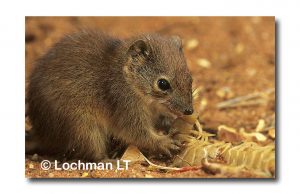Annie Roth of the New York Times writes kalutas live fast and die young — or, at least, the males do. Male kalutas, small mouselike marsupials found in the arid regions of Northwestern Australia, are semelparous, meaning that shortly after they mate, they drop dead.
 This extreme reproductive strategy is rare in the animal kingdom. Only a few dozen species are known to reproduce in this fashion, and most of them are invertebrates. Kalutas are dasyurids, the only group of mammals known to contain semelparous species. Only around a fifth of the species in this group of carnivorous marsupials — which includes Tasmanian devils, quolls and pouched mice — are semelparous and, until recently, scientists were not sure if kalutas were among them.
This extreme reproductive strategy is rare in the animal kingdom. Only a few dozen species are known to reproduce in this fashion, and most of them are invertebrates. Kalutas are dasyurids, the only group of mammals known to contain semelparous species. Only around a fifth of the species in this group of carnivorous marsupials — which includes Tasmanian devils, quolls and pouched mice — are semelparous and, until recently, scientists were not sure if kalutas were among them.
Now there is no doubt that, for male kalutas, sex is suicide.
In a study, published in April in the Journal of Zoology, researchers from the University of Western Australia and the University of Queensland confirmed that kalutas exhibit what is known as obligate male semelparity.
“We found that males only mate during one highly synchronized breeding season and then they all die,” said Genevieve Hayes, a vertebrate ecologist and the lead author of the study.
Dr. Hayes and her colleagues monitored the breeding habits of a population of kalutas in Millstream Chichester National Park in Western Australia during the 2013 and 2014 breeding seasons. In both seasons, the researchers observed a complete die-off of males. Although male kalutas have exhibited semelparity in captivity, this was the first time it had been seen in the wild.
Kalutas evolved independently of other semelparous dasyurids, so the confirmation that male kalutas die after mating suggests that this unorthodox reproductive strategy has evolved not once, but twice in dasyurids.
“It’s really interesting that it would evolve twice in dasyurids because it’s such an extreme mating system,” Dr. Hayes said.





 fingernails, according to science-technology website io9.
fingernails, according to science-technology website io9..jpg) heat if it’s available.
heat if it’s available. Yet people continue to look for a push, pharmaceutically through Viagra and numerous spam e-mail spin-offs, and, with Valentine’s Day approaching, through food.
Yet people continue to look for a push, pharmaceutically through Viagra and numerous spam e-mail spin-offs, and, with Valentine’s Day approaching, through food.  Smell evolved for finding both food and mates, and much research has found that body odor plays a powerful role in human attraction.
Smell evolved for finding both food and mates, and much research has found that body odor plays a powerful role in human attraction. .jpg) Chef/co-owner Donna Dooher of Mildred’s Temple Kitchen said,
Chef/co-owner Donna Dooher of Mildred’s Temple Kitchen said, .jpg) "Pork consumption improves sexual activity. This is not a small detail. Besides, some nicely grilled pork is much more gratifying than taking Viagra."
"Pork consumption improves sexual activity. This is not a small detail. Besides, some nicely grilled pork is much more gratifying than taking Viagra."